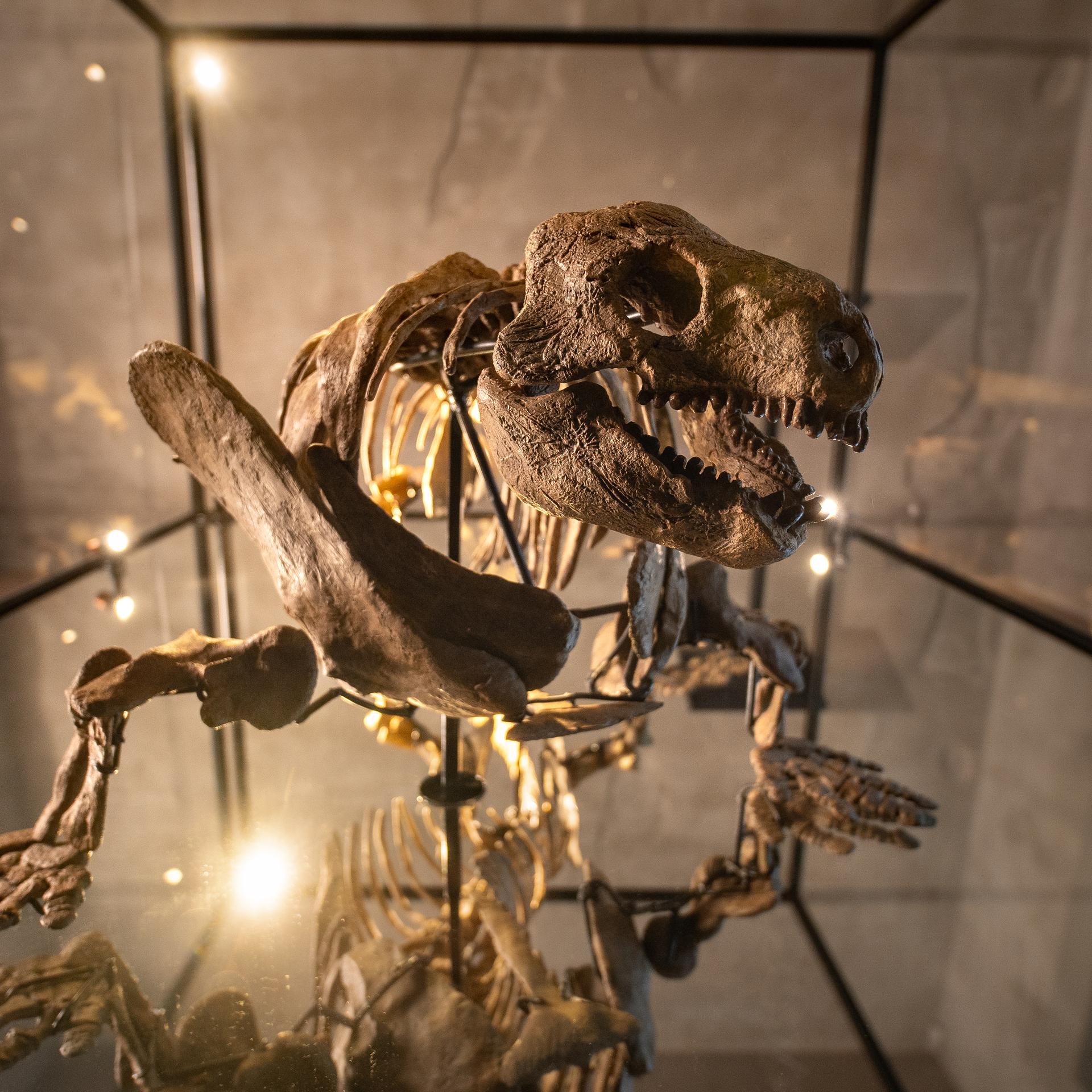Diadectes sideropeilcus
The ability to grow big and strong on land

Living in water means breathing with gills that often sit on the side of the body, and thus have nothing to do with the mouth and nose. The first animals that crawled from the water and onto land had a bit of a challenge because their gills only worked in the water, which meant that they had to start breathing through their mouth and nose. It is difficult to learn, and the first ones had trouble eating and breathing at the same time. They were almost suffocated if they took too large of a bite of food.
Diadectes was the first fully terrestrial vertebrate to attain a large size. It did so because it mastered life on land better than all its predecessors and, among other things, developed the ability to eat and breathe at the same time. This allowed it to get the most from the plants it munched its way through and grow to 3 metres in length, just like we become big and strong when we eat spinach.
In addition to this clever adaptation, Diadectes could also lay eggs on land and thus was not dependent on being near water like Edops and Eryops. In order to lay eggs on land, a leathery or hard shell had to be developed. The shell had to be both resistant and porous – this means ‘to have small holes’ so that air can enter. We are mammals and do not lay eggs, but the same traits develop inside women who then just carry the eggs inside them.
In the gallery you'll find a bone-map of the exhibited Apateon. The red-highlighted areas indicate which bones is real.
Facts about Diadectes sideropeilcus
Size: Up to 1.5–3 metres long
Weight: About 150 kg
Period: The Permian period (290–270 million years ago)
Food: Herbivores
Habitat: On land
Locations: North America (primarily Texas)
